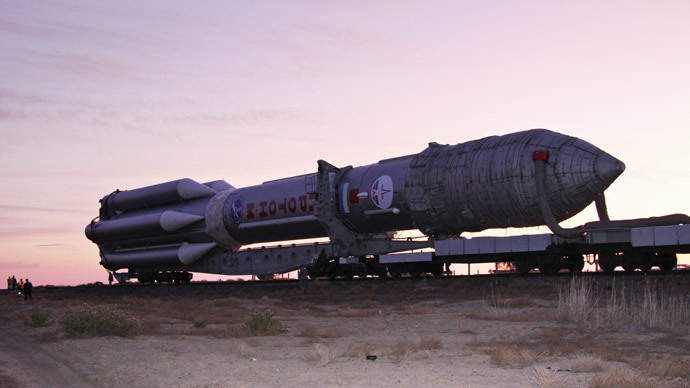‘Doomsday sputnik’: Russia said to launch new missile-attack warning satellite

After years of delay, Russia plans to deploy this year the first satellite of its new constellation replacing the space component of the early warning system, Russian media reported. It will also double as an emergency communication satellite.
The satellite was developed for the military, so naturally little is known about it. Identified by disambiguation ‘product 14F142’, it is expected to be launched in the fourth quarter of 2014, according to Kommersant newspaper.
The spacecraft will be the first in a constellation, aimed to replace the old Oko-1 early warning system, which allows Russia survey countries possessing nuclear-capable ballistic missiles and detect possible launches.
Oko-1 is currently in bad shape. To be fully operational, it needs four 73D6 satellites in placed in a highly elliptical orbit, dubbed ‘Molnya’ (lightning) orbit, to provide full-time coverage of the area of interest, and an additional backup satellite in a 71X6 geosynchronous orbit. Russia lost the last of the 71X6s in April this year and has not launched replacements for the 73D6s since 2008, with only two still operational.
The Russian military assured that the ground-based network of early warning radar stations, which the country considerably upgraded in the past years, is robust enough to compensate for the blind spot in the space component, but they may not be completely earnest.
A replacement for Oko-1, the EKS (Unified Space System), has been in development since at least 2000 and was initially expected the star space tests in 2009. But the project faced a set of delays and a round of public bickering and a court battle between the Defense Ministry and Energia space corporation, which builds the platforms for the satellite. Now Kommersant says all the disputes and setbacks are in the past, with the spacecraft almost ready for launch.
The 14F142 is to be launched by a Soyuz-2.1b rocket and a Fregat third stage to a Tundra orbit – a highly elliptical orbit similar to Molnya, but with twice its period. The newspaper source says the instruments build by Kometa Corporation will be able to detect launches of submarine-launched ballistic missiles and launches of some cruise missiles.
In addition to detecting a launch, the spacecraft will be able to calculate the projectile’s flight parameters, which will be handy for ground radar stations locking on it. It will also provide communication functions for the military, allowing commands for a retaliatory nuclear strike to be transmitted, should things really go that far south, Kommersant said.
Amid preparation for the launch the military are upgrading Oko-1 ground station in Serpukhov-15 to take control of the 14F142.














